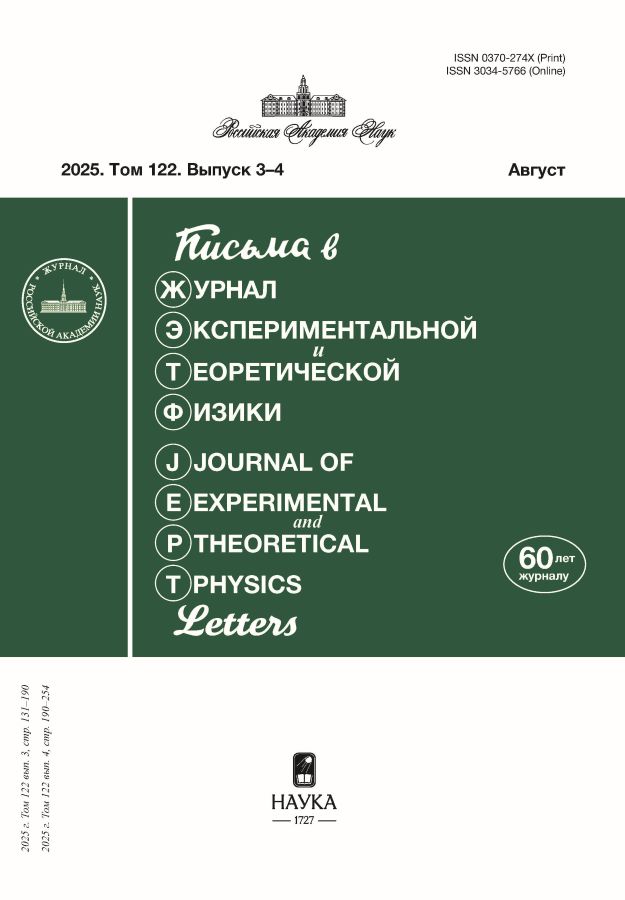Topological origin of horizon temperature via the Chern–Gauss–Bonnet theorem
- Authors: Hughes J.C.1, Kusmartsev F.V1
-
Affiliations:
- College of Engineering and Physical Sciences, Khalifa University
- Issue: Vol 122, No 3-4 (2025)
- Pages: 199-200
- Section: Articles
- URL: https://clinpractice.ru/0370-274X/article/view/693465
- DOI: https://doi.org/10.31857/S0370274X25080136
- EDN: https://elibrary.ru/FWSKBQ
- ID: 693465
Cite item
Abstract
This paper establishes a connection between the Hawking temperature of spacetime horizons and global topological invariants, specifically the Euler characteristic of Wick-rotated Euclidean spacetimes. This is demonstrated for both de Sitter and Schwarzschild, where the compactification of the near-horizon geometry allows for a direct application of the Chern–Gauss–Bonnet theorem. For de Sitter, a simple argument connects the Gibbon–Hawking temperature of the Bunch–Davies state to the global thermal de Sitter temperature. This establishes that spacetime thermodynamics are a consequence of the geometrical structure of spacetime itself, therefore suggesting a deep connection between global topology and semi-classical analysis.
About the authors
J. C.M Hughes
College of Engineering and Physical Sciences, Khalifa University
Email: jack.hughes.phys.14@gmail.com
Abu Dhabi, United Arab Emirates
F. V Kusmartsev
College of Engineering and Physical Sciences, Khalifa University
Email: fedor.kusmartsev@ku.ac.ae
Abu Dhabi, United Arab Emirates
References
- G.W. Gibbons and S.W. Hawking, Phys. Rev. D 15, 2752 (1977); URL https://journals.aps.org/prd/abstract/10.1103/PhysRevD.15.2752.
- G.W. Gibbons and S.W. Hawking, Phys. Rev. D 15, 2738 (1977).
- G.E. Volovik, Symmetry 16, 763 (2024); Preprint 2312.02292[gr-qc].
- G.E. Volovik, arXiv:2504.05763 [gr-qc]; Preprint 2504.05763[gr-qc] (2025).
- S. Carlip, Int. J. Mod. Phys. D 23, 1430023 (2014); Preprint 1410.1486[gr-qc].
- A. Almheiri, T. Hartman, J. Maldacena, E. Shaghoulian, and A. Tajdini, Rev. Mod. Phys. 93, 035002 (2021); URL https://arxiv.org/abs/2006.06872.
- D. Diakonov, arXiv:2504.01942 [hep-th]; Preprint 2504.01942[hep-th] (2025).
- B.S. Kay and R.M. Wald, Phys. Rep. 207, 49 (1991).
- R. Kubo, J. Phys. Soc. Jpn. 12, 570 (1957).
- P.C. Martin and J.S. Schwinger, Phys. Rev. 115, 1342 (1959).
- N.D. Birrell and P.C.W. Davies, Quantum fields in curved space, Cambridge Monographs on Mathematical Physics, Cambridge University Press, Cambridge, UK (1982); ISBN 978-0521278584.
- T. Padmanabhan, Rep. Prog. Phys. 73, 046901 (2010); Preprint 0911.5004.
- E.W. Mielke, Geometrodynamics of Gauge Fields: On the Geometry of Yang-Mills and Gravitational Gauge Theories, Mathematical Physics Studies, 2nd ed., Springer, Cham (2017); ISBN 978-3-319-29733-0.
- L.W. Tu, Differential Geometry: Connections, Curvature, and Characteristic Classes, Graduate Texts in Mathematics, Springer, Cham, Switzerland (2017), v. 275; ISBN 978-3-319-55082-4.
- J.C.M. Hughes and F.V. Kusmartsev, arXiv:2403.11527 [gr-qc]; Preprint 2403.11527[gr-qc] (2024).
- S.S. Chern, Ann. Math. 45, 747 (1944).
- S.S. Chern, Ann. Math. 46, 674 (1945).
- J.C.M. Hughes and F.V. Kusmartsev, arXiv:2505.05814 [gr-qc]; Preprint 2505.05814 (2025).
- G.E. Volovik, arXiv:2505.20194; Preprint 2505.20194 (2025).
- G.E. Volovik, JETP Lett. 90, 1 (2009); Preprint 0905.4639 [gr-qc].
- A. Hatcher, Algebraic Topology, Cambridge University Press, Cambridge (2001); ISBN 9780521795401.
Supplementary files











